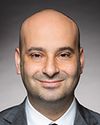Thank you for your question.
This is a very good question, which is extremely difficult to answer.
[Technical difficulties] we have never experienced this type of protest. There were other protests around the monument in the past, but on this scale, I think it's the first [technical difficulties].
We worked very closely with our colleagues at Veterans Affairs, the RCMP and the Ottawa Police Service to ensure the best possible crowd control. We also had to make sure that these monuments were protected.
I'll give you an example of just how out of the ordinary this is. My team, of which I am very proud, spent a lot of time over the last three weeks putting up concrete barricades in support of the Ottawa Police, the City of Ottawa and the province. Our entire organization was mobilized on weekdays and weekends to put up concrete fences and barriers everywhere to provide security as requested by the City of Ottawa, the Ottawa Police and the Ontario Provincial Police.




